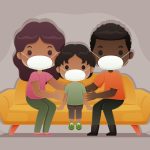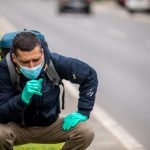Critical Lung Disease
Critical lung disease doctor in Delhi
People with Critical Lung Disease have difficulty breathing. When you breathe, your lungs take in oxygen from the air and deliver it to the bloodstream. The cells in your body need oxygen to work and grow. During a normal day, you breathe nearly 25,000 times. Millions of people in the world have lung disease. If all types of lung disease are lumped together, it is the number three killer in the World. The term lung disease refers to many disorders affecting the lungs, such as asthma, chronic obstructive pulmonary disease, infections like influenza, pneumonia and tuberculosis, lung cancer, and many other breathing problems.
Lung Cancer
Lung cancer is the second-most diagnosed cancer in both men and women. However, it is still the most common cause of cancer death. Lung cancer is a malignant tumour in the lungs. This means that the abnormal cells of the tumour grow without order or control. They destroy the healthy lung tissue around them. Lung cancer can spread to other parts of the body.
There are two major types of lung cancer: small cell lung cancer and non-small cell lung cancer. Non-small cell lung cancer is the more common. It makes up about 80 percent of lung cancer cases. This type of cancer usually grows and spreads to other parts of the body more slowly than small cell lung cancer does. One reason lung cancer is such a killer is that it is hard to detect in its early stages. Smoking, Radon exposure, Industrial exposures, Genetic factors are some of the causes of Lung cancer. A small portion of lung cancers occur in people with no apparent exposure risk for the disease. Lung cancer in people who have never smoked is a major public health problem and continued research is needed. Women, compared to men, appear to have higher rates of lung cancer that is not linked to smoking. Lung cancer symptoms usually vary from person to person. A cough that doesn’t go away and gets worse over time, Constant chest pain, coughing up blood, Shortness of breath, or wheezing, Loss weight and loss of appetite, Frequent lung infections, such as bronchitis or pneumonia are some of the symptoms.
Surgery, Radiation therapy, Chemotherapy are some of the ways to treat Lung Cancer.
COPD
Chronic Obstructive Pulmonary Disease (COPD) makes it hard for you to breathe. Coughing up mucus is often the first sign of COPD. Chronic bronchitis and emphysema are common COPDs. In COPD, your airways and air sacs lose their shape and become floppy, like a stretched-out rubber band. Cigarette smoking is the most common cause of COPD. Breathing in other kinds of irritants, like pollution, dust, or chemicals, may also cause or contribute to COPD. Quitting smoking is the best way to avoid developing COPD. Treatment can make you more comfortable, but there is no cure. With chronic bronchitis the lining of the breathing tubes become swollen and produces a lot of mucus that gets coughed up. With emphysema the walls of the air sacs in the lung are broken down and the air spaces get larger, and air gets trapped. Some people have both chronic bronchitis and emphysema, so we now prefer to call the disease COPD.A small number of people have a rare form of COPD called alpha-1 (AAT) related emphysema. This form of COPD is caused by an inherited lack of a protective protein in the blood. Signs and symptoms of COPD include Constant coughing, sometimes called “smoker’s cough”, shortness of breath while doing everyday activities, producing a lot of sputum (also called phlegm or mucus), feeling like you can’t breathe or take a deep breath & wheezing. Quitting smoking, taking your medicine, oxygen therapy, pulmonary rehabilitation & surgery are some of the ways to treat COPD.
Influenza (Flu)
Influenza (flu), also referred to as seasonal flu, is a highly contagious illness caused by the influenza virus. Anyone can get the flu as it is spread easily from person to person, usually when an infected person coughs or sneezes. The virus may belong to one of three different influenza virus families: A, B or C. In addition to seasonal flu, there are two other flu viruses receiving extra attention around the globe today Novel 2009 H1N1 Influenza Virus & Avian Flu (H5N1). Influenza is a respiratory infection with symptoms that can affect the entire body. Symptoms include Sudden onset of high fever, Headache, muscle aches and joint pain, Cough (usually dry), Chills, Sore throat & Nasal congestion, and runny nose. It is hard to know for sure you have the flu based on symptoms alone. A doctor’s exam may be needed to tell whether you have developed the flu or a complication of the flu. People with the flu are advised to get plenty of rest, drink plenty of liquids, avoid using alcohol and tobacco and, if necessary, take medications such as acetaminophen (paracetamol) to relieve the fever and muscle aches associated with the flu. Children and teenagers with flu symptoms (particularly fever) should avoid taking aspirin during an influenza infection (especially influenza type B), because doing so can lead to Reye’s syndrome, a rare but potentially fatal disease of the liver. Since influenza is caused by a virus, antibiotics have no effect on the infection, unless prescribed for secondary infections such as bacterial pneumonia. Antiviral medication can be effective, but some strains of influenza can show resistance to the standard antiviral drugs. The single best way to prevent the flu is to get a flu vaccination each fall.
Asthma
Asthma is a chronic disease that affects your airways. Your airways are tubes that carry air in and out of your lungs. If you have asthma, the inside walls of your airways become sore and swollen. That makes them very sensitive, and they may react strongly to things that you are allergic to or find irritating. When your airways react, they get narrower, and your lungs get less air. This can cause wheezing, coughing, chest tightness and trouble breathing, especially early in the morning or at night. When your asthma symptoms become worse than usual, it’s called an asthma attack. In a severe asthma attack, the airways can close so much that your vital organs do not get enough oxygen. People can die from severe asthma attacks.
Tuberculosis (TB)
Tuberculosis (TB) is a bacterial infection caused by a germ called Mycobacterium tuberculosis. The bacteria usually attack the lungs, but they can also damage other parts of the body. TB spreads through the air when a person with TB of the lungs or throat coughs, sneezes, or talks. If you have been exposed, you should go to your doctor for tests. You are more likely to get TB if you have a weak immune system. Symptoms of TB in the lungs may include: a bad cough that lasts 3 weeks or longer, Weight loss, coughing up blood or mucus, Weakness or fatigue, Fever and chills, Night sweats If not treated properly, TB can be deadly. You can usually cure active TB by taking several medicines for a long period of time. People with latent TB can take medicine so that they do not develop active TB. TB can be detected through a skin test or a TB blood test. Treatment for TB depends on whether a person has active TB disease or only TB infection. If you have become infected with TB, but do not have active TB disease, you may get preventive therapy. This treatment kills germs that are not doing any damage right now but could so do in the future. The most common preventive therapy is a daily dose of isoniazid (INH) for 6 to 9 months. There is a vaccine against TB called BCG, or bacille Calmette-Guerin. It is used in many foreign countries where TB is more common.
Nose Allergies
Hay fever, or allergic rhino conjunctivitis, represents the most common form of allergies, affecting up to 30% of the population. An allergist discusses the causes, symptoms, and treatments of this disorder, as well as complications that can occur, such as sinusitis. Less common diseases are also covered, including fungal sinusitis and nasal polyposis. Allergic rhinitis can blunt the sense of smell, and it can also interfere with the other important functions of the nose. Allergic rhinitis is the most common. Seasonal allergic rhinitis comes and goes as various plants come into bloom. Rhinitis can also occur without allergies. Examples include viral rhinitis (the common cold); drug-induced rhinitis; and hormonal rhinitis. Most people with allergic rhinitis can diagnose the problem themselves simply by recognizing typical symptoms. In complicated cases, an ENT (ear, nose, and throat) specialist can check for polyps and other nasal abnormalities. If it is important to identify specific allergic triggers, allergists can perform skin tests; the so-called RAST blood test can also help pin down the culprits. Three strategies are available for the treatment of nose allergy avoiding triggers, using medications to reduce symptoms, and getting immunotherapy (“allergy shots”).
Things you can do to reduce your risk of lung diseases
- Stop smoking
- Avoid second-hand smoke
- Test for radon
- Avoid asbestos
- Protect yourself from dust and chemical fumes
- Eat a healthy diet
- Ask your doctor if you should have a spirometry test
- Ask your doctor about protecting yourself from flu and pneumonia with vaccinations
- See your doctor



